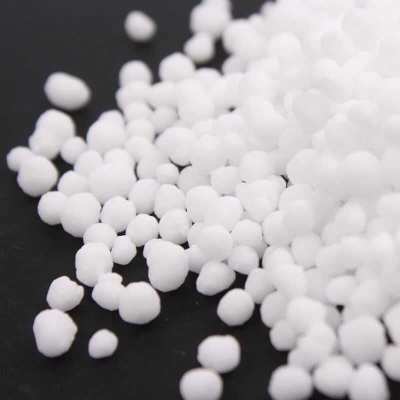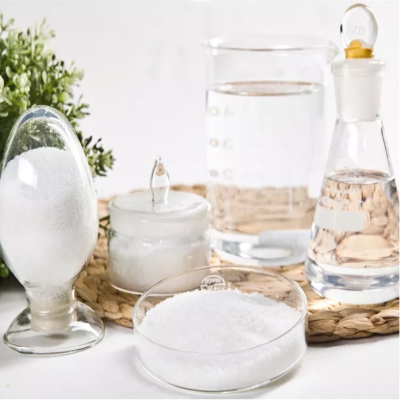-
Categories
-
Pharmaceutical Intermediates
-
Active Pharmaceutical Ingredients
-
Food Additives
- Industrial Coatings
- Agrochemicals
- Dyes and Pigments
- Surfactant
- Flavors and Fragrances
- Chemical Reagents
- Catalyst and Auxiliary
- Natural Products
- Inorganic Chemistry
-
Organic Chemistry
-
Biochemical Engineering
- Analytical Chemistry
- Cosmetic Ingredient
-
Pharmaceutical Intermediates
Promotion
ECHEMI Mall
Wholesale
Weekly Price
Exhibition
News
-
Trade Service
The rapid consumption of petroleum raw materials and rising prices have made the synthesis of polyurethane (PU) from bio-renewable resources the focus of attention
.
Among various biological raw materials, vegetable oils, such as sunflower oil, peanut oil, castor oil, linseed oil, corn oil, soybean oil, etc.
, have received great attention due to their unique structure, reasonable price and easy chemical modification
.
? In recent years, PU has been successfully synthesized by using the nut shell oil extracted from cashew nuts, called cashew nut shell liquid (CNSL) as a building block
.
CNSL is a waste from the cashew nut food industry and contains a large number of reactive phenol derivatives with highly hydrophobic fatty chains, such as cardanol, cardanol, 2-methyl cardanol, and anacardic acid
.
Early literature reported the use of CNSL to prepare resol and phenolic resin varnishes.
These materials are generally used as thermosetting resins to prepare biocomposite materials
.
CNSL is also used to prepare sustainable PU materials with ideal properties
.
For example, Liu et al.
developed acrylic UV-curable coatings containing multi-arm cardanol (a component of CNSL)
.
Wang and Zhou et al.
used cardanol-based polyols to synthesize PU coatings with good mechanical properties
.
Kathalewar et al.
reported the use of cardanol diglyceryl ether to synthesize diisocyanate-free PU coatings
.
Although they used a green synthesis method, the mechanical properties of the obtained PU were poor, which limited its application
.
Suresh and Kishanprasad prepared different di/triols and reacted them with methylene diphenyl diisocyanate (MDI) to synthesize PU
.
Suresh synthesized rigid PU foam with cardanol-modified polyol
.
Although these studies have reported successful synthesis of PU, the complex modification process of cardanol limits its application
.
In addition, many studies did not report the mechanical properties of the obtained PU as an active surface coating
.
? The anti-corrosion of metal substrates is the biggest challenge and economic burden faced by the government and related enterprises
.
It costs billions of dollars to protect metal-based items each year
.
According to reports, due to metal corrosion, India and the United States will lose 4-5% and 6.
2% of their GDP respectively
.
Therefore, there is an urgent need to develop anticorrosive polymer coatings to prevent such huge losses and extend the service life of metal products
.
As mentioned earlier, PU® is widely used as a surface coating due to its versatility and good properties
.
Its properties are easy to adjust through structure and component modification
.
In addition, reasonable design can make the coating have surface hydrophobicity and self-healing properties, thereby prolonging the service life of anti-corrosion coatings
.
? Niranjan Karak of Tezpur University in India and others use biological raw materials, such as cashew nut shell liquid, acid-glycerol dimer modified polyols, sunflower oil-based monoglycerides, and other raw materials, including dihydroxyalkyl polydimethyl Polysiloxane, polyε-caprolactone, diol, 2, 4/2, 6-toluene diisocyanate, isophorone diisocyanate, etc.
have prepared PUs containing different components
.
The obtained PUs have good mechanical properties, thermal properties, surface hydrophobicity (static contact angle 112.
3-121.
2°), excellent microwave response self-healing properties (72-89 s), biodegradability and good corrosion resistance (corrosion resistance) Speed: 8.
76×10-5 mm/y)
.
In addition, even after being repaired by mechanical damage, the PU coating can maintain its corrosion resistance and reduce the corrosion rate of the corroded low carbon steel sheet
.
References: Tuhin Ghosh, Niranjan Karak,?Cashew nut shell liquid terminated self-healable polyurethane as an e?ective anticorrosive coating with biodegradable attribute,?Progress in Organic Coatings,?2020,?139, 105472.
.
Among various biological raw materials, vegetable oils, such as sunflower oil, peanut oil, castor oil, linseed oil, corn oil, soybean oil, etc.
, have received great attention due to their unique structure, reasonable price and easy chemical modification
.
? In recent years, PU has been successfully synthesized by using the nut shell oil extracted from cashew nuts, called cashew nut shell liquid (CNSL) as a building block
.
CNSL is a waste from the cashew nut food industry and contains a large number of reactive phenol derivatives with highly hydrophobic fatty chains, such as cardanol, cardanol, 2-methyl cardanol, and anacardic acid
.
Early literature reported the use of CNSL to prepare resol and phenolic resin varnishes.
These materials are generally used as thermosetting resins to prepare biocomposite materials
.
CNSL is also used to prepare sustainable PU materials with ideal properties
.
For example, Liu et al.
developed acrylic UV-curable coatings containing multi-arm cardanol (a component of CNSL)
.
Wang and Zhou et al.
used cardanol-based polyols to synthesize PU coatings with good mechanical properties
.
Kathalewar et al.
reported the use of cardanol diglyceryl ether to synthesize diisocyanate-free PU coatings
.
Although they used a green synthesis method, the mechanical properties of the obtained PU were poor, which limited its application
.
Suresh and Kishanprasad prepared different di/triols and reacted them with methylene diphenyl diisocyanate (MDI) to synthesize PU
.
Suresh synthesized rigid PU foam with cardanol-modified polyol
.
Although these studies have reported successful synthesis of PU, the complex modification process of cardanol limits its application
.
In addition, many studies did not report the mechanical properties of the obtained PU as an active surface coating
.
? The anti-corrosion of metal substrates is the biggest challenge and economic burden faced by the government and related enterprises
.
It costs billions of dollars to protect metal-based items each year
.
According to reports, due to metal corrosion, India and the United States will lose 4-5% and 6.
2% of their GDP respectively
.
Therefore, there is an urgent need to develop anticorrosive polymer coatings to prevent such huge losses and extend the service life of metal products
.
As mentioned earlier, PU® is widely used as a surface coating due to its versatility and good properties
.
Its properties are easy to adjust through structure and component modification
.
In addition, reasonable design can make the coating have surface hydrophobicity and self-healing properties, thereby prolonging the service life of anti-corrosion coatings
.
? Niranjan Karak of Tezpur University in India and others use biological raw materials, such as cashew nut shell liquid, acid-glycerol dimer modified polyols, sunflower oil-based monoglycerides, and other raw materials, including dihydroxyalkyl polydimethyl Polysiloxane, polyε-caprolactone, diol, 2, 4/2, 6-toluene diisocyanate, isophorone diisocyanate, etc.
have prepared PUs containing different components
.
The obtained PUs have good mechanical properties, thermal properties, surface hydrophobicity (static contact angle 112.
3-121.
2°), excellent microwave response self-healing properties (72-89 s), biodegradability and good corrosion resistance (corrosion resistance) Speed: 8.
76×10-5 mm/y)
.
In addition, even after being repaired by mechanical damage, the PU coating can maintain its corrosion resistance and reduce the corrosion rate of the corroded low carbon steel sheet
.
References: Tuhin Ghosh, Niranjan Karak,?Cashew nut shell liquid terminated self-healable polyurethane as an e?ective anticorrosive coating with biodegradable attribute,?Progress in Organic Coatings,?2020,?139, 105472.







